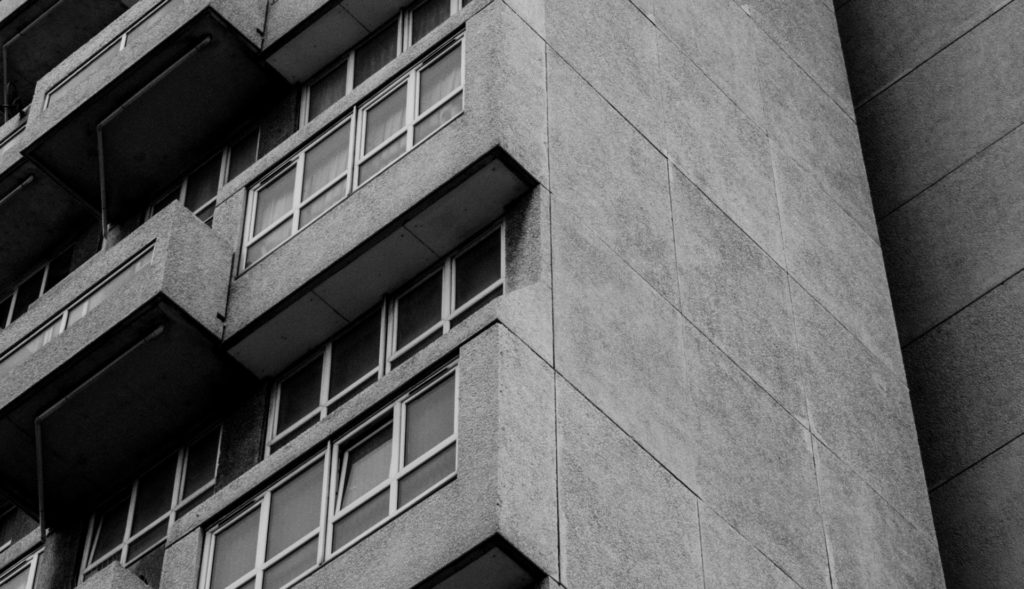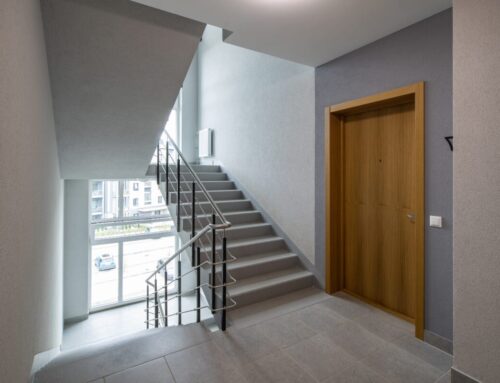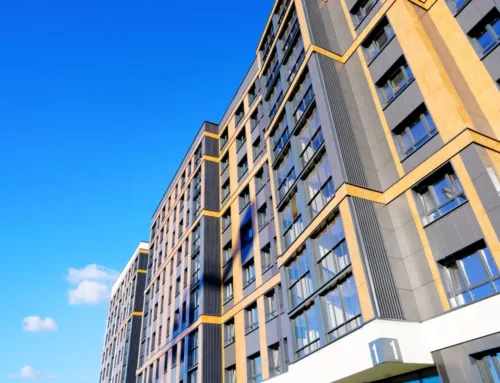Belinda Bagnall, Managing Director of Residentsline, looks at fire risks within blocks of flats.
Fire safety is still high on the agenda across the country. Since Grenfell, it’s been talked about more in the news, changes are being made to health and safety rules and there’s just generally more awareness of the risks of fire within blocks of flats.

But does that awareness seem to have evaded your neighbours? Or maybe your landlord seems a little too laid back about their responsibilities?
Today we want to talk about the importance of managing the communal areas of buildings properly and what your landlord should be doing to protect you, your home and your investment.
What can pose a fire risk in blocks of flats?
You may think that a welcome mat or a plant pot or two aren’t a problem when it comes to fire safety. But really, anything being stored in a communal space creates more risk than the area being completely clear.
The London Fire Brigade state that:
“Tenants storing belongings in communal areas can pose a real risk to safety. Items can accidentally be set alight or be set alight deliberately.
In the event of fire, items in hallways and on stairs can stop people escaping and stop firefighters doing their job.
You need to ensure that corridors, stairs and stairwells are clear and make sure electrical and gas riser cupboards aren’t used to store anything.”
UK Fire Risk Assessments reiterate the same points, saying that while much of the responsibility for communal area fire safety rests with the landlord, there are many things that residents can do (or not do) to help mitigate the risk too. They’re advice is to:
- Avoid storing bikes, pushchairs, mobility scooters etc in communal areas as these large items are known to block escape routes
- No items should be stored in the communal areas or on stairs that could impede escape or cause a fire themselves
- Never prop open a fire door for any reason
- Do not store flammable materials in a cupboard that contains electrical circuits
- Ensure that all refuse is disposed of correctly and is kept inside the bins provided
Ultimately, it’s your life and home that’s at risk if this advice is ignored so be sure to either eliminate the risk by moving/removing objects if necessary, or, simply make your landlord, Residents’ Management Company (RMC) or managing agent aware and ensure your comments are acted on.
So, what are your responsibilities when it comes to fire protection?
Fire Risk Assessments
Fire risk assessments are a legal requirement of anyone who manages a residential or workplace building in the UK. This could be a freeholder, managing agent or RMC and the legal responsibility lands with them regardless of who actually conducts the assessment or subsequent reviews.
An assessment involves the review of a building and its fire risks (the findings of which must be recorded in written form if more than 5 people regularly occupy the building).
A ‘competent person’ (more on this later!) must attend the building and assess its fire risk, making recommendations to make the building safer if necessary.
The law says the assessment must be ‘suitable and sufficient’ for the building, and an assessor will consider:
- How likely a fire is to start
- What the consequences would be if a fire did start
- What needs to be done in the building to minimise the risk of fire starting and/or spreading
What Does a Fire Risk Assessment Cover?
The assessment looks at what ‘general fire precautions’ are currently in place in the building’s common areas such as stairwells, hallways and entrance halls.
The complexity of the assessment will depend on the size and usage of the building- a small HMO will require a less in-depth report than a large block of flats, for example:
In all cases, the assessor will look at measures in place to:
- Reduce the risk of a fire starting
- Reduce the risk of fire spreading
- Alert people about a fire in the building
- Enable people to escape from the building
- Tell people what to do if a fire starts
- Reduce the harm caused if a fire starts
The general fire precautions must protect:
- People who are allowed to be in the building
- People near the building, who may be at risk if a fire started
Who is Responsible for Physically Carrying Out a Fire Risk Assessment?
The law simply states that the assessments should be carried out by a ‘competent person’ but that the requirement to fulfil the law lies with the building’s ‘responsible party’ e.g. a landlord, managing agent or freeholder.
Some useful resources for ascertaining whether a contractor would be deemed ‘competent’ in the eyes of the law are:
- Guidance from The Leasehold Advisory Service
- Guidance from the The National Fire Chiefs Council
- Guidance from the Fire Risk Assessment Competency Council
The Takeaway
There is a huge, shared responsibility that comes with living in leasehold flats, and only by working together as residents and with your landlord can the risk of fire be minimised.
If all residents do their part to keep communal areas clear and to alert the landlord re any perceived risks, then they have done their part. The law (and hopefully common sense) ensures that landlords comply with regular fire safety assessments and the vast majority do their part willingly. Speak up if you don’t believe this to be the case.
Head to the Residentsline website for information on all of our products and services or, if you’d like to speak to one of our fantastic, specialist team, give us a call on 0800 281 235.




Leave A Comment